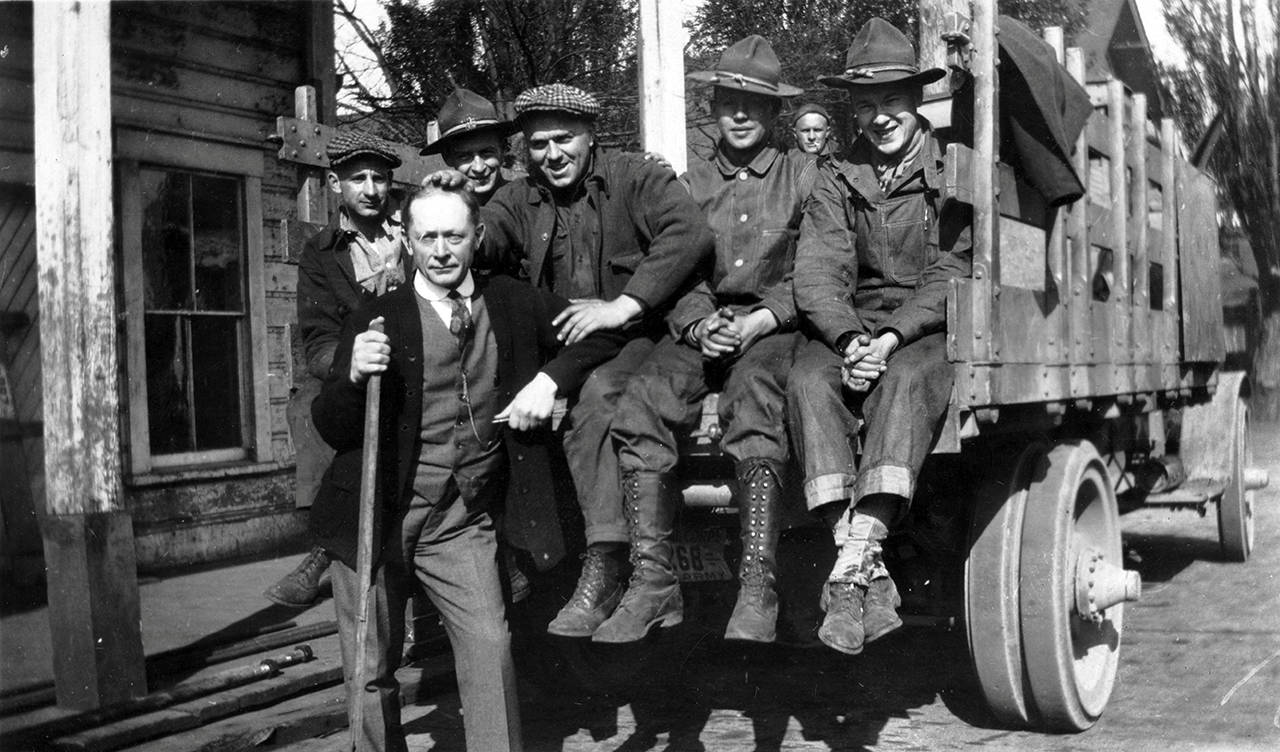The Polson Museum will offer a feature-length slide presentation Sunday at the 7th Street Theatre in Hoquiam to chronicle the pivotal role Grays Harbor County played in World War I.
“This will be a comprehensive day-by-day history of WWI on the Harbor,” said museum director John Larson.
The show will coincide with the 100th anniversary of Armistice Day, the end of WWI. The date is celebrated annually in the U.S. as Veterans Day.
On Saturday, the museum at 1611 Riverside Ave. in Hoquiam will host a reception from 1 to 5 p.m. At 1:30, Larson said the Hoquiam Rotary will rededicate the museum’s flagpole; the club paid to have it retrofitted with new hardware. This reception is free, with donations gladly accepted.
The theater presentation is made in conjunction with “Spruce, Foxglove and Motorships: Grays Harbor and the Great War,” an exhibit that opened earlier this year at the Polson and runs through the end of 2019. It features photos illustrating the varied contributions made by Harbor residents during the “War to End All Wars,” as well as the social and political atmosphere at the time.
Larson will narrate the slideshow, with selections from his “Centennial Moment” radio program and information gleaned from the major newspaper at the time, the Washingtonian, paired with the Polson’s large collection of historical photos and artifacts from the era.
Logging and shipbuilding made up a large amount of the war effort on the Harbor, said Larson. Sitka spruce was in high demand, its tight grain perfect for aircraft components. Fir was also needed to build warships, with construction taking place at two Harbor locations during the final year of the war.
Soldiers were shipped in to help experienced local loggers cut down the massive trees and transport them to area mills to be honed into whatever components were needed. Vast road systems made of timbers were punched into logging camps, marking the first time truck logging was used in such a way, according to Larson.
The contributions of women on the Harbor also are highlighted in both the exhibit and the slideshow. The Red Cross set up stations with sewing machines to take used cotton items and recycle them into bandages. The women and children of the Harbor were also asked to collect foxglove, a plant that was plentiful here. Dried in local kilns and processed at a University of Washington pharmaceutical lab, foxglove was used to make digitalis — a depressant that causes the heart rate to slow, which was thought to give wounded soldiers on the battlefield more time to receive medical aid.
Admission to Sunday’s slideshow is $10 for adults. Students are free with ID. Tickets are available in advance at the museum, Crown Drug and Harbor Drug in Hoquiam; at City Center Drug in Aberdeen; and online at brownpapertickets.com/event/3739541.


